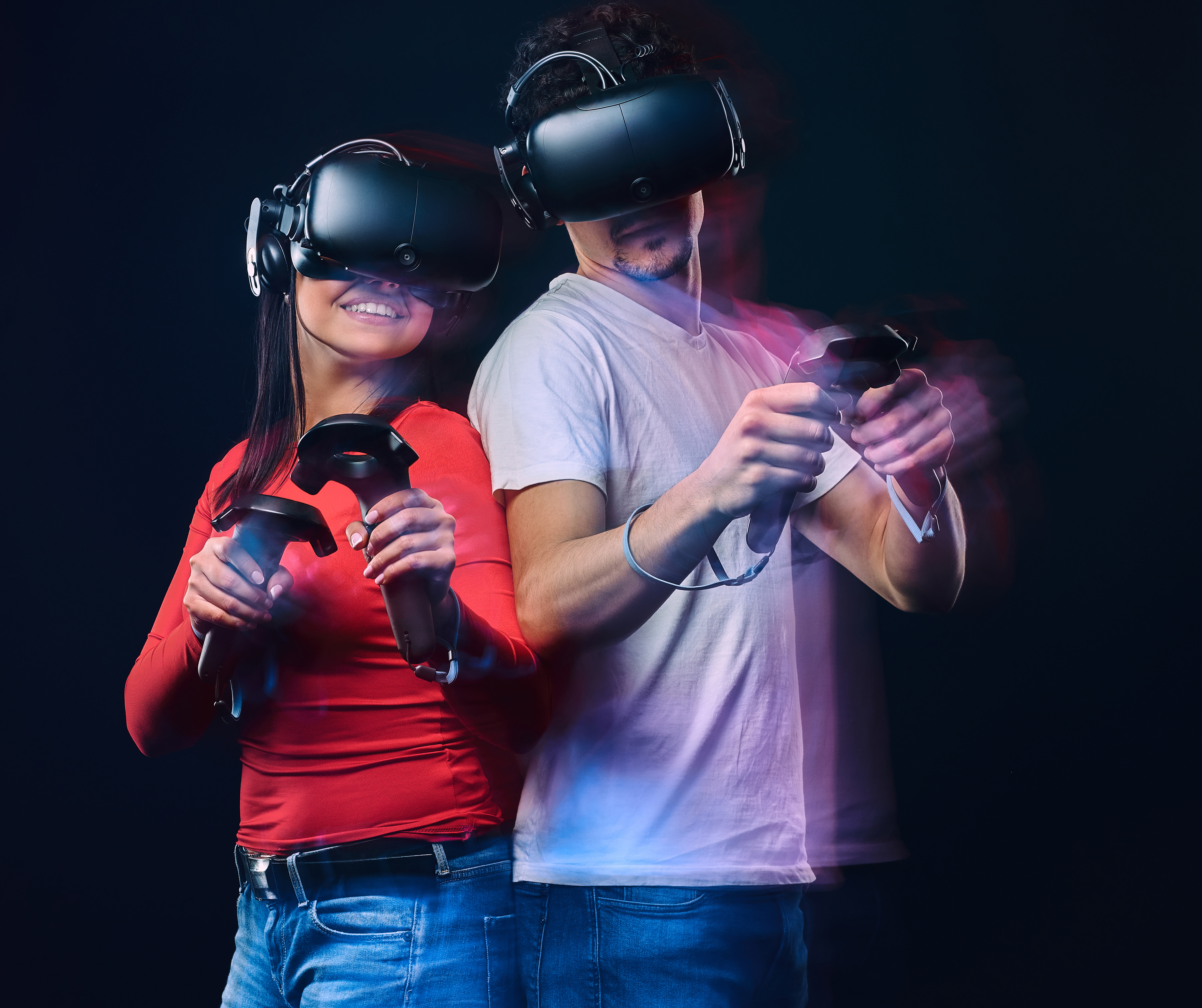Virtual Reality headsets remain luxury items in India, where a quality device costs more than three months’ salary for the average worker. Yet the same technology could revolutionise education in rural schools, train healthcare workers in remote villages, and provide entertainment experiences impossible through traditional screens. This contradiction defines India’s VR challenge: the technology offers transformative potential precisely for populations who can’t afford access to it.
High-end VR headsets ranging from $300 to $1,000 put immersive technology firmly beyond reach for most Indian consumers. However, recent developments in cloud rendering, 5G connectivity, smartphone-based VR viewers, and government manufacturing incentives suggest affordability barriers might finally crack. Companies like Reliance Jio are experimenting with ultra-low-cost VR viewers compatible with budget smartphones, targeting tier-two and tier-three cities where premium devices rarely penetrate.
If India successfully democratizes VR through localised content, indigenous manufacturing, and digital infrastructure expansion, it could leapfrog developed markets by making immersive technology genuinely inclusive rather than elite entertainment. The question isn’t whether VR will transform Indian society—it’s whether that transformation reaches everyone or remains confined to urban pockets of prosperity.
Breaking the Cost Barrier Through Technology Innovation
The primary hurdle for VR democratization in India remains cost—quality headsets and supporting hardware stay out of reach for vast segments of the population. However, recent technological shifts help bridge this affordability gap through innovative approaches that reduce hardware requirements without sacrificing experience quality. Smartphone-based VR viewers and standalone entry-level devices have become increasingly affordable through local manufacturing and economies of scale that global brands can’t match.
Advances in cloud rendering fundamentally change the economics by allowing resource-intensive VR experiences to stream without expensive local processing hardware. India’s expanding 5G network enables this streaming approach, reducing device costs whilst maintaining high-quality immersive experiences previously requiring premium equipment. Industry analyst Rajesh Patel explains the convergence: “Cloud-powered VR combined with India’s rapid 5G rollout is set to drastically reduce device costs and enable immersive experiences on budget smartphones.” This technological approach democratizes access by shifting computational burden from consumer devices to cloud infrastructure that scales across millions of users. Versatile devices serving both entertainment and education purposes simultaneously increase value propositions, boosting adoption odds among price-sensitive consumers evaluating purchases carefully.
The key insight is that democratization doesn’t require making expensive hardware cheaper—it requires reimagining delivery mechanisms so that expensive hardware becomes unnecessary altogether. By leveraging India’s telecom infrastructure investments and cloud computing capabilities, VR experiences can reach consumers through devices they already own rather than requiring new hardware purchases.
Government Push for Indigenous VR Manufacturing
India’s Digital India programme, National Policy on Electronics, and Production-Linked Incentive schemes actively encourage domestic manufacturing of VR hardware and components. By fostering Make in India efforts through subsidies and startup support, the government seeks to reduce import dependence that drives costs upward. Policy frameworks increasingly encourage digital infrastructure development, digital literacy, and affordable internet connectivity—all essential prerequisites for mass VR adoption.
Funding schemes supporting AR/VR content creation in regional languages help localise immersive content, boosting cultural relevance and user uptake simultaneously. A government whitepaper emphasised the dual approach: “Indigenous production and digital literacy programmes are twin enablers to make VR technology usable and affordable for India’s varied population.” These frameworks underpin the creation of self-sustaining, affordable VR industries rather than fostering permanent dependence on imported technology and foreign platforms.
Subsidies and grants for startups and MSMEs in VR content and product development foster homegrown innovation addressing India-specific challenges. The policy logic recognises that simply importing VR technology perpetuates affordability barriers, whilst indigenous manufacturing creates price competition and employment simultaneously. Production-linked incentives reduce manufacturing costs through volume guarantees that justify factory investments, whilst skill-building initiatives ensure an adequate technical workforce for emerging VR industries.
Localised Content Driving Meaningful Engagement
India’s vast linguistic and cultural diversity necessitates VR content tailored regionally to engage and educate wider audiences beyond English-speaking urban elites. Gaming, education, virtual tourism, and healthcare simulations are sectors leveraging localised AR/VR experiences that address India-specific needs and cultural contexts. Initiatives like the Atal Innovation Mission have incubated content startups focused on vernacular interactive learning tools using VR for subjects taught poorly through traditional methods. The success of global VR platforms like Oculus and Vive partly stems from diverse content libraries—lessons Indian developers actively adopt through regional customisation.
Platforms offering low-data, mobile-friendly VR content curated in multiple Indian languages see wider adoption in semi-urban and rural areas where bandwidth remains constrained. Enhanced cultural contextualization not only democratizes access but also fosters deeper emotional connections, which are essential for sustained engagement rather than mere initial trials driven by novelty. By offering VR experiences that resonate culturally and linguistically, developers increase adoption in tier-two and tier-three cities where Western content may feel alien.
This approach fosters greater investment in technology that feels personally relevant rather than imported entertainment disconnected from daily life and cultural references. International platforms also adjust content for India’s unique audience demographics, recognising that one-size-fits-all approaches fail in markets characterized by India’s diversity and complexity.
Infrastructure and Literacy as Foundation Pillars
Affordable, high-quality internet connectivity remains the cornerstone of inclusive VR adoption—without reliable networks, even affordable devices become useless paperweights. India’s rapid 5G rollout and expansion of fibre optic networks, alongside the proliferation of affordable smartphones, dismantle previous infrastructure constraints that limited immersive technology. Additionally, digital literacy programmes targeting rural populations, schools, and senior citizens increase user confidence and capability to adopt VR technologies comfortably. Interactive VR training has been piloted for vocational education, healthcare worker training, and farmer advisory services in remote Indian regions with success.
These pilots demonstrate the practical potential of immersive technology beyond entertainment, emphasizing inclusive applications that address real development challenges rather than mere gaming. VR evangelist Anil Kumar notes the holistic requirement: “Mass democratization of VR depends on a complete ecosystem—affordable tech, connectivity, localised content, and user education working together.” Robust internet and mobile connectivity are critical for a successful VR rollout that reaches populations beyond metro cities with existing infrastructure advantages. Pilots using immersive VR for healthcare training, vocational education, and agricultural advisory demonstrate utility beyond entertainment, emphasizing the inclusive potential for development applications. This infrastructure foundation enables VR democratization by ensuring technology reaches users with connectivity that supports immersive experiences rather than frustrating technical limitations.
India’s VR democratization challenge represents more than technology adoption—it’s about whether transformative immersive experiences remain elite privileges or become genuinely inclusive tools accessible across economic strata. The convergence of cloud rendering, 5G networks, indigenous manufacturing incentives, and localised content creation suggests affordability barriers might finally break down systematically. However, achieving genuine democratization requires sustained coordination across government policy, private innovation, infrastructure investment, and digital literacy programmes working simultaneously rather than through isolated interventions.
If India succeeds in making VR affordable and accessible, it could demonstrate how emerging markets leapfrog developed nations by building inclusive technology ecosystems from inception rather than retrofitting accessibility later. The stakes extend beyond entertainment—VR’s potential for education, healthcare training, and vocational skill development could address development challenges that traditional methods struggle to reach. Whether that potential materializes depends on how quickly manufacturing scales, how effectively content is localized, and whether digital infrastructure reaches rural populations systematically rather than accidentally.







